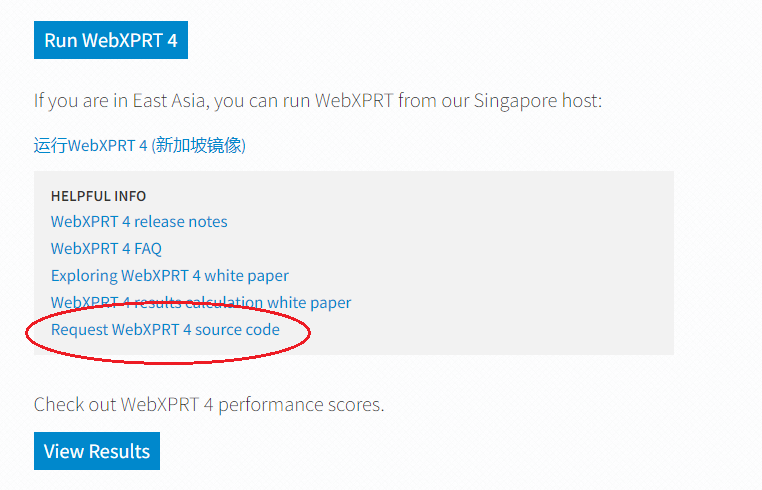If you’re new to the XPRTs, you may not be aware that we provide free access to XPRT benchmark source code. Publishing XPRT source code is part of our commitment to making the XPRT development process as transparent as possible. By allowing interested parties to access and review our source code, we’re encouraging openness and honesty in the benchmarking industry. We’re also inviting constructive feedback that can help ensure that the XPRTs continue to improve and contribute to a level playing field for all the types of products they measure.
While we do offer free access to the XPRT source code, we’ve decided to offer the code upon request instead of using a permanent download link. This approach prevents bots or other malicious actors from downloading the code. It also has the benefit of allowing us to interact with users who are interested in the source code and answer any questions they may have. We’re always keen to learn more about what others are thinking about the XPRTs and the types of work they measure.
We recently received some questions about accessing the WebXPRT 4 source code, which made us realize that we needed to make a clearer way for people to ask for the code. In response, we added a “Request WebXPRT 4 source code” link to the gray Helpful Info box on WebXPRT.com (see it in the screenshot below). Clicking the link will allow you to email the BenchmarkXPRT Support team directly and request the code.

After we receive your request, we’ll send you a secure link to the current WebXPRT 4 build package. For those users who wish to set up a local instance of WebXPRT 4 for their own internal testbeds, the package will contain all the necessary files and installation instructions. We allow folks to set up their own instances for purposes of review, internal testing, or experimentation, but we ask that users publish only test results from the official WebXPRT 4 site.
While we offer free access to XPRT source code, our approach to derivative works differs from some traditional open-source models that encourage developers to change products and even take them in different directions. Because benchmarking requires a product that remains static to enable valid comparisons over time, we allow people to download the source, but we reserve the right to control derivative works. This discourages a situation where someone publishes an unauthorized version of the benchmark and calls it an “XPRT.”
If you have any questions about accessing the WebXPRT 4 source code, let us know!
Justin












